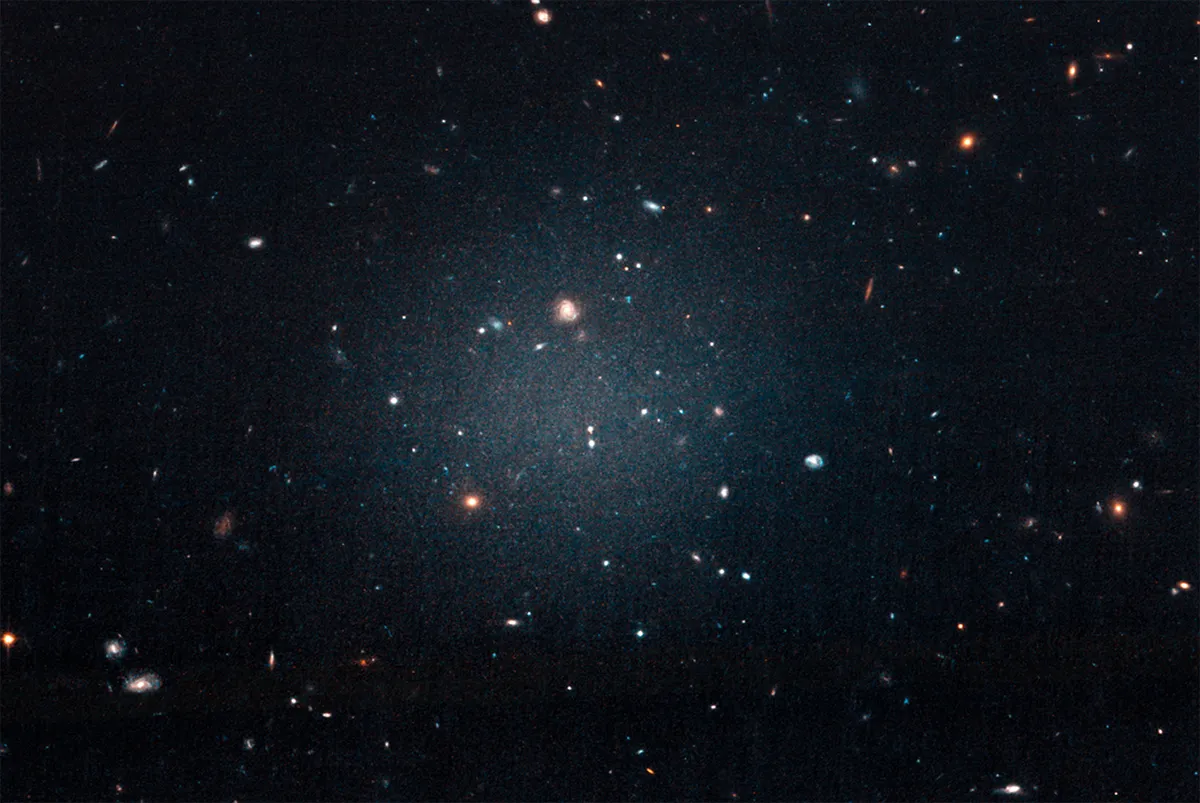Next time you're looking at a beautiful image of multiple stars and galaxies like those captured by the Hubble Space Telescope, or staring in awe at the latest James Webb Space Telescope images, consider this:
All the 'normal', visible matter we can see in the Universe - planets, stars, galaxies etc. - accounts for just 5% of its total content.
The rest is composed of dark energy - the name given to the force that appears to be accelerating the rate of the expansion of the Universe - and dark matter - which is known to exist, but which cannot be observed directly.

So the question is this: if dark matter accounts for a vast amount of the known matter in our Universe, why do some galaxies appear to contain almost none of it?
What does it mean to find a galaxy without dark matter, or with very little of it?
This is the question asked by Pavel Mancera Piña, a postdoctoral researcher at Leiden Observatory in the Netherlands, who specialises in in dark matter.
We spoke to Piña to find out more.

What is dark matter and why is it called ‘dark’?
We have evidence suggesting that there should be a certain amount of mass in the Universe, but this mass cannot be observed directly.
Even in early works from the 1920s, astronomers knew that in order to explain how fast some galaxies move there needed to be more mass than we could account for.
An astronomer called Fritz Zwicky came up with the name ‘dark matter’, but essentially the name only reflects that we don’t really know what it is.
What might dark matter be made of?
Most of the community – not all – believes that dark matter is made of particles that don’t interact with electromagnetic radiation, instead only interacting with normal matter through gravity.
Essentially, it doesn’t absorb or emit light (and heat). We can only infer that it’s there due to gravitational effects.
The problem is that although we have built experiments like the Large Hadron Collider, we haven’t been able to detect dark matter particles, so we don’t know what their exact properties are.

How do you look for dark matter?
By looking at how fast galaxies rotate. We know the rotation of a galaxy is a consequence of its total mass, so if we can observe how fast a galaxy rotates, then we know its total mass.
We can compare the total mass measured from how fast the galaxy rotates with the mass of stars and gas [in the galaxy], which we can observe directly from telescopes.
We can then look at the mismatch between the two to infer how much dark matter there is in the galaxy.
There is typically a very strong mismatch, suggesting that there is a lot of mass that we don’t see.
This is is what happened with Fritz Zwicky's observations of the Coma Cluster.
What do your investigations show?
Our team was looking at a galaxy that was very peculiar because it’s classified as an ‘ultra-diffuse’ galaxy.
These galaxies are a bit weird because the distribution of light within them is similar to big spiral galaxies like the Andromeda Galaxy or the Milky Way.
But they have about 1,000 times less stellar mass than big galaxies.Some people say they have the mass of dwarf galaxies, but the size of giants.
We observed the motion of gas in one of these galaxies using the Very Large Array, a set of antennae in New Mexico, to obtain very sharp images.
We measured how fast the gas is rotating in this galaxy. And then we tried to see how much dark matter there was.
Usually, when you look at small galaxies, you find that most of the mass is dark matter. Perhaps 90%, maybe 80%.
We found instead that there was a very small contribution from dark matter in this galaxy.
In fact, if you take the numbers, you could argue that you don’t need dark matter to explain how fast the galaxy is rotating.

Why do ultra-diffuse galaxies have little dark matter?
According to our understanding of galaxy formation and evolution, all galaxies should have dark matter.
So if you see a galaxy with little dark matter it’s very puzzling, though there are some mechanisms that could explain it.
We think a potential explanation is that the galaxies have dark matter but that its density is very low.
This tells us that the distribution of dark matter in these galaxies – if there is dark matter – should be very atypical and completely different to what we expect from our models of galaxy formation and evolution.
What do galaxies with little to no dark matter tell us?
They challenge the norm in different aspects.
Perhaps they are telling us that the distribution of dark matter in galaxies is much broader than what we would have expected.
Or perhaps they are telling us that there are other mechanisms that can produce low dark matter densities.
I think what is very exciting is that we can use these observations to infer the dark matter content, and perhaps these galaxies can tell us something about the nature of dark matter itself.
Get answers to some of the most common questions about dark matter
This interview originally appeared in the May 2023 issue of BBC Sky at Night Magazine.

